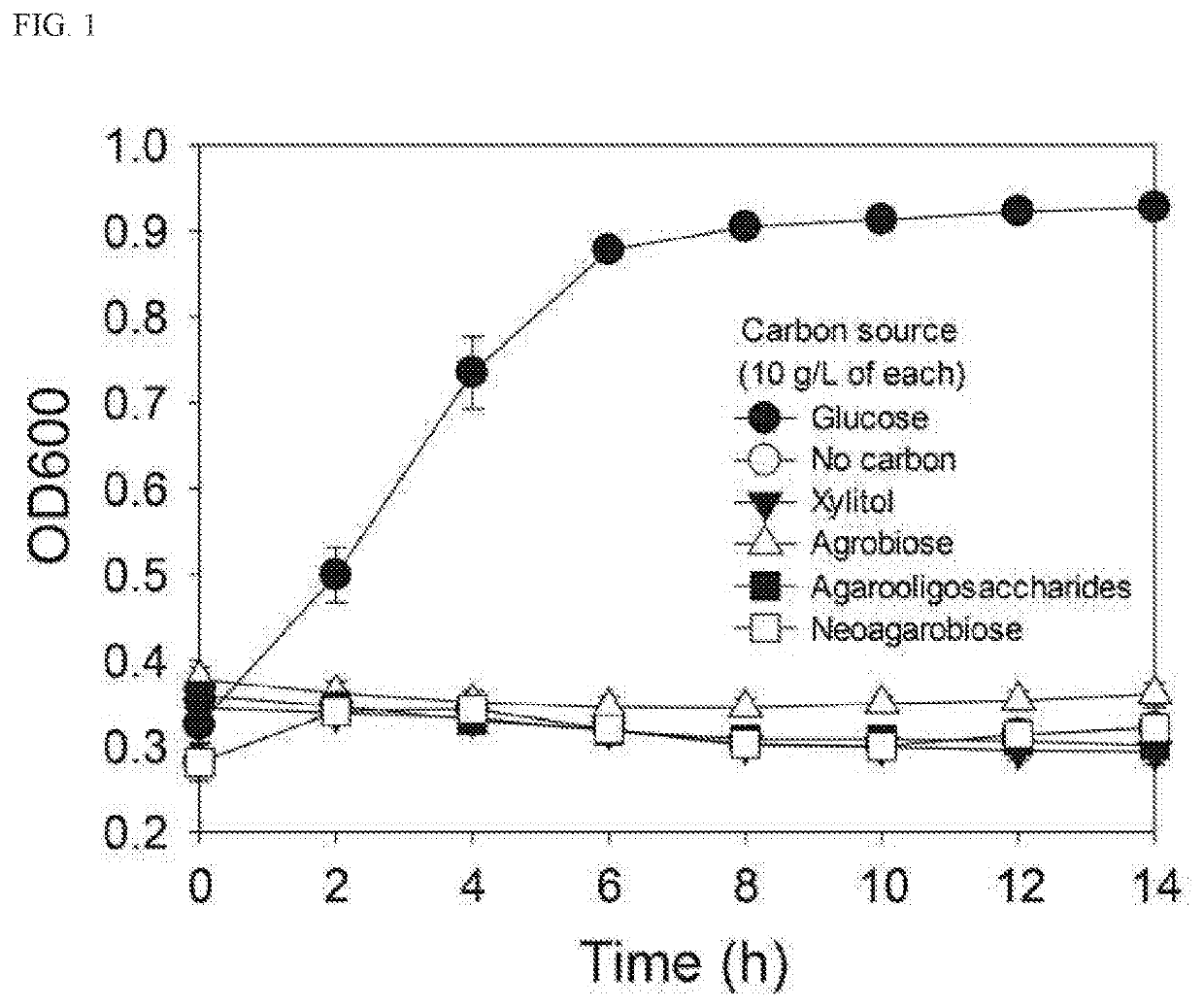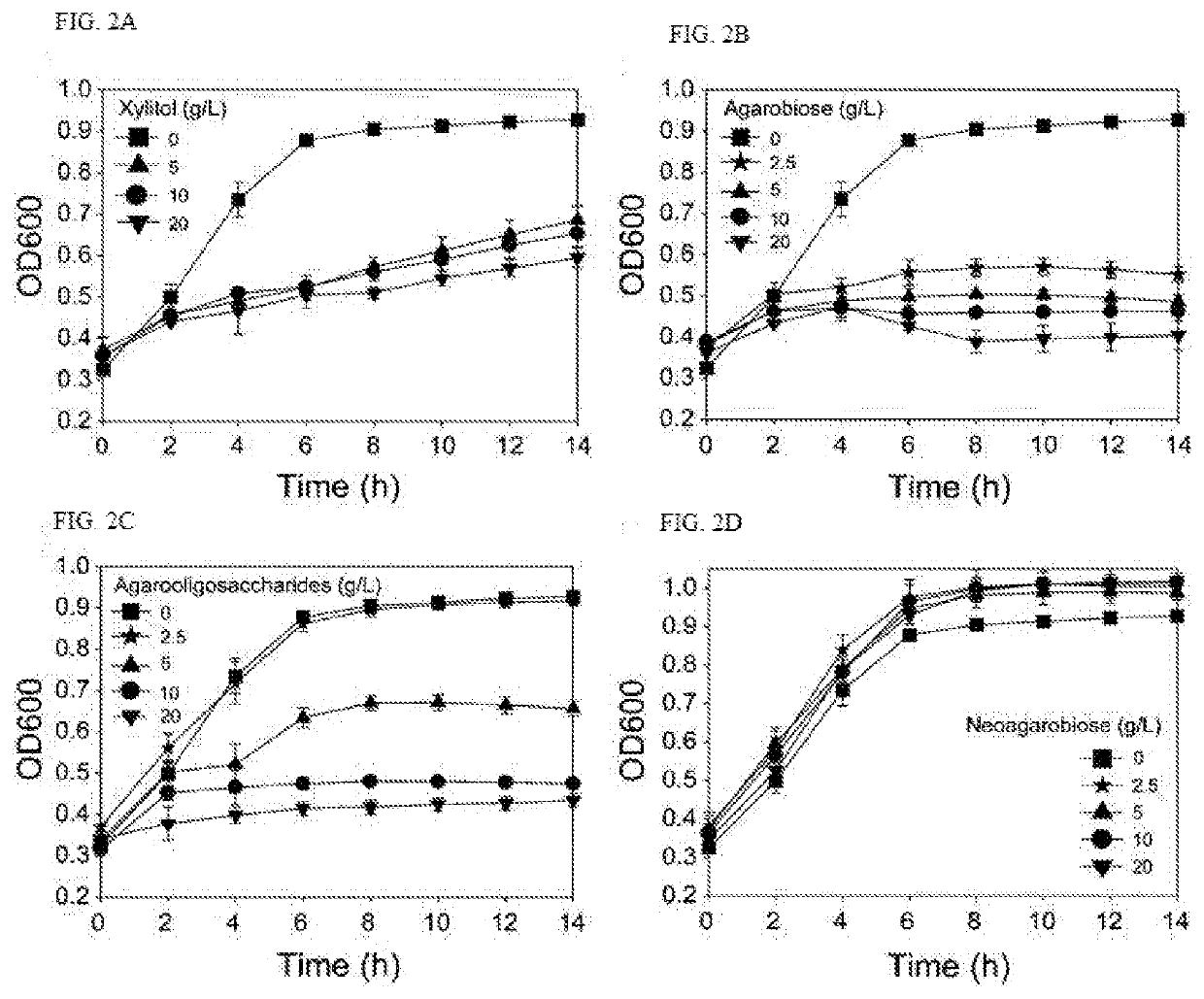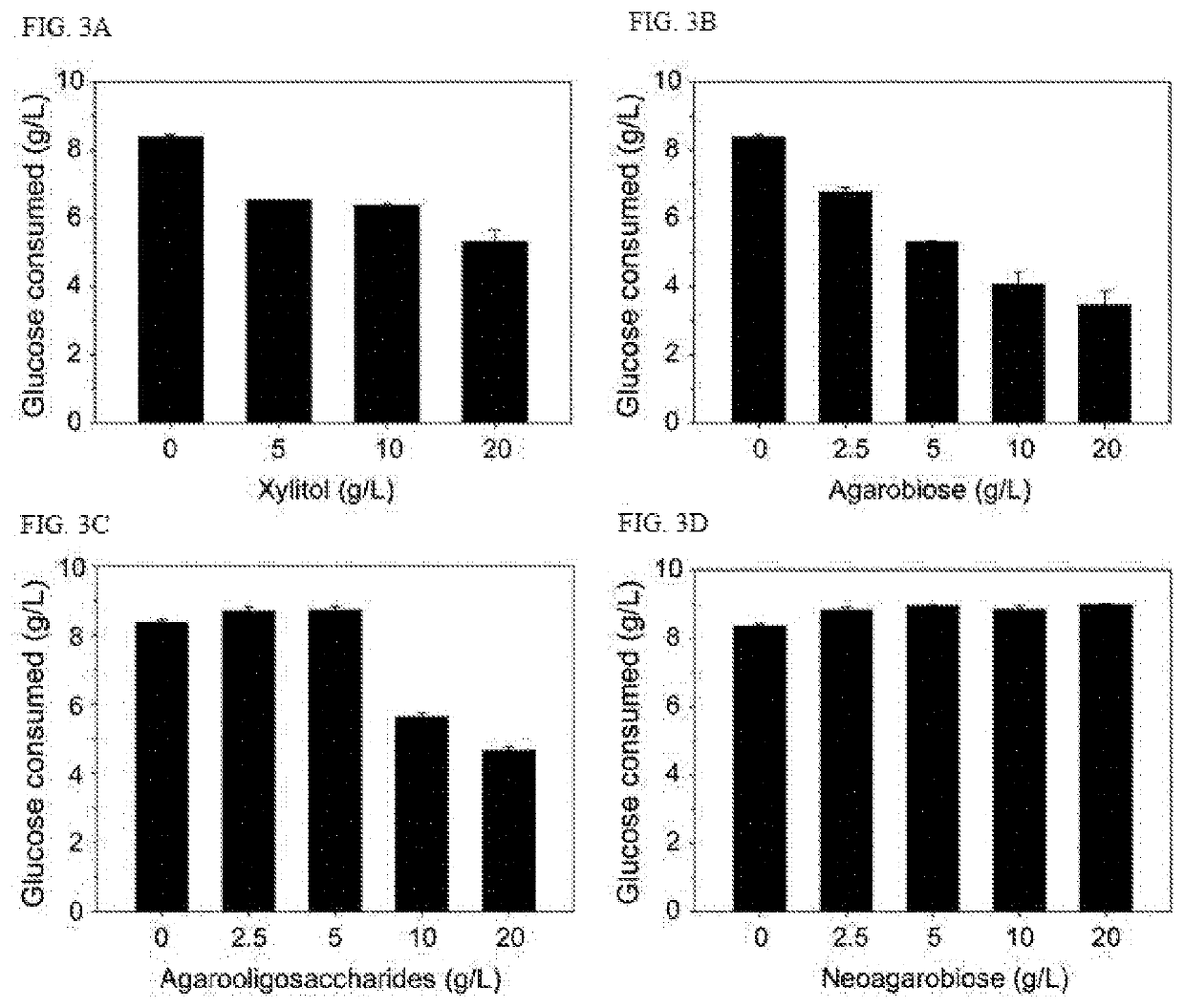Use of agarobiose or agarooligosaccharide having anticariogenic activity
a technology of agarobiose and agarooligosaccharide, which is applied in the direction of antibacterial agents, drug compositions, food ingredients, etc., can solve the problems of insufficient xylitol, insufficient natural sugars with anticariogenic effects, and inability to suppress the growth of i>streptococcus mutans/i>, so as to inhibit the growth
- Summary
- Abstract
- Description
- Claims
- Application Information
AI Technical Summary
Benefits of technology
Problems solved by technology
Method used
Image
Examples
examples
Production of Agarooligosaccharides Through Phosphoric Acid Hydrolysis of Agarose
[0073]Agarose was dissolved in 2% phosphoric acid at a concentration of 30.7% (w / v) and a reaction was allowed to occur therebetween using a microwave digester at 110° C. for 10 minutes, and then the acid-hydrolyzed reaction product was neutralized using 5 M NaOH such that the reaction product had a pH of 5 to 6. The reaction product was lyophilized to obtain powder-type agarooligosaccharides.
Production of Neoagarobiose Using Aga16B and Aga50D
[0074]5% agarose was prepared using 200 mL of a 20 mM Tris-HCl buffer (pH 7.0) and dissolved in an autoclave at 121° C. for 10 minutes, and then 19.7 mg of Aga16B (see Korean Patent Application No. 2016-0006589) was added thereto in order to degrade the agarose, and a reaction was allowed to occur therein at 55° C. and 200 rpm for 12 hours, thereby obtaining neoagarotetraose and neoagarohexaose as reaction products. Each reaction product was allowed to react with...
PUM
| Property | Measurement | Unit |
|---|---|---|
| concentration | aaaaa | aaaaa |
| pH | aaaaa | aaaaa |
| concentrations | aaaaa | aaaaa |
Abstract
Description
Claims
Application Information
 Login to View More
Login to View More - R&D Engineer
- R&D Manager
- IP Professional
- Industry Leading Data Capabilities
- Powerful AI technology
- Patent DNA Extraction
Browse by: Latest US Patents, China's latest patents, Technical Efficacy Thesaurus, Application Domain, Technology Topic, Popular Technical Reports.
© 2024 PatSnap. All rights reserved.Legal|Privacy policy|Modern Slavery Act Transparency Statement|Sitemap|About US| Contact US: help@patsnap.com










